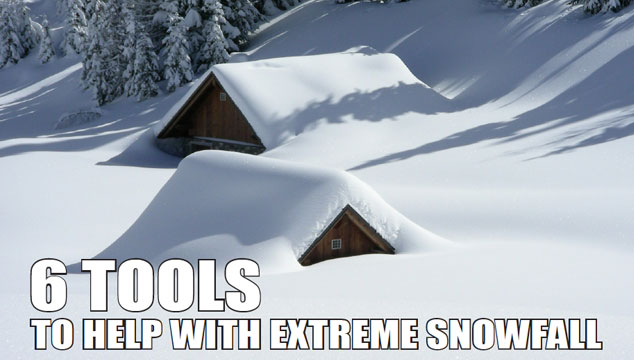
The impact snow has on your life largely relates to the amount that falls in a given period of time. An inch or two of snow won’t cause significant difficulties for most people, and the resulting dusting is often a treat for the eyes. Several more inches of snow may close local schools and give you a day off of work but probably won’t cause significant hardships.
However, if the fallen snow is better measured in feet, you’ll need to be ready to cope with the changes it will impose.
For example, you may need to clear your driveway or excavate paths between the front door and garage. In order to accomplish these often difficult tasks, you’ll want the right tools for the job.
Listed below you’ll find six great types of tools that will help you cope with strong snow storms:
1. Snow Shovel
A good old-fashioned snow shovel is the first tool you’ll want for dealing with heavy snow. You can use a shovel to help clear sidewalks, driveways, or even to move large quantities of snow from one place to another. There are a number of different snow shovel designs available. Each is designed to suit different amounts of snow and sizes of people.
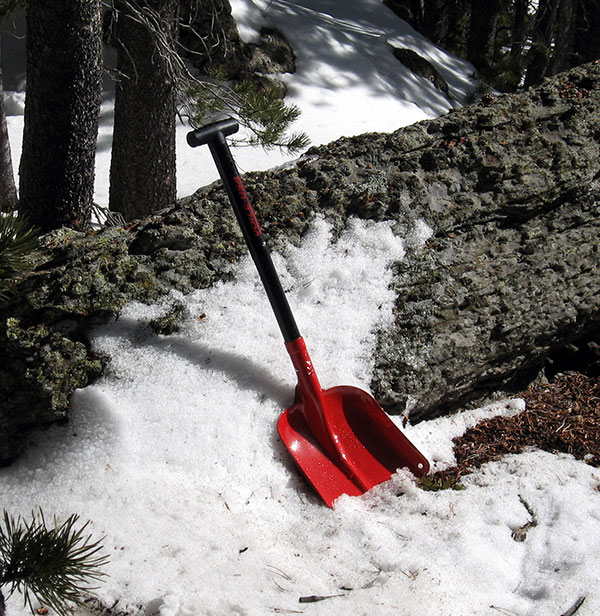
Look for shovels with straight handles as these typically allow easier operation than bent handled models. Also, opt for wood or plastic handles as they’ll feel warmer to the touch. Use a snow shovel with an extra hand-grip halfway down the handle if possible as this will take some of the strain off your back.
It may be helpful to use a snow shovel in conjunction with other snow removal tools to help facilitate the process. For example, you may want to use a snow spear or salt spreader (both of which are discussed below) to make it easier to clear your land.
2. Roof Rake
Of course, snow won’t be limited to the ground and you’ll also have to contend with it covering your roof. It is unwise to simply leave the snow there for lengthy periods of time as it can cause water and structural damage to your roof.
In fact, snow loads of more than 20 to 25 pounds per square foot may even trigger roof collapse. Especially if your home wasn’t specifically fortified to withstand such loads. Those with very low roof slope rates are at higher risk than those with very steep roof angles. The steep angles shed snow and meltwater better.
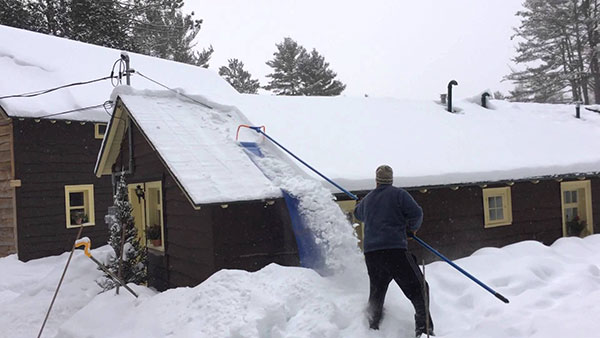
Many people solve this problem by hiring professional roof companies to clear the snow. Hiring someone can be quite expensive and you may have to wait for the company to have a schedule opening. Accordingly, it is always wise to at least have the ability to deal with the problem yourself.
A high-quality roof rake will let you clear your roof relatively quickly and easily. Roof rakes come in a variety of sizes and shapes, be sure to pick a model well-suited for your home. Most models essentially resemble a yard rake and they’re used in a similar manner. Telescoping models are often the best option as they’ll let you reach distant parts of your roof. Then they’re easy to wield while scraping the snow off the near edges.
3. Snow Blower
Investing in a gas powered snow blower is worth it if you want to avoid strenuous activity or have to clear a large area. Blowers can be a bit pricey but they are very helpful tools for those who live in snow covered regions.
Think carefully about the amount of snow you are likely to face as it should heavily influence your purchasing decision. Different snow blowers are designed to handle varying amounts of snow. You’ll want to avoid overwhelming your blower as this can lead to damage or malfunctions.
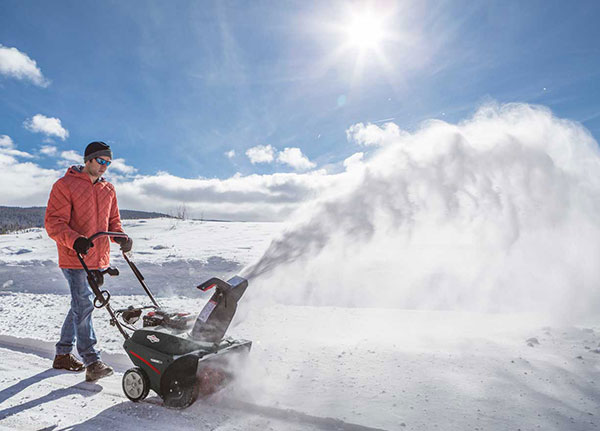
It’s also important to note that snow blowers come in different widths. Select one to match the types of places you’ll be using it. For example, you don’t want to select a snow blower that is too wide for your sidewalk. But if you select one that is too narrow it will take multiple passes to clear.
Some snow blowers also come with a variety of bells and whistles, some of which may even provide significant value. Some high-end snow blowers come equipped with LED lights that allow for safer use during low light conditions. Another additional feature is power steering which makes it easier to pilot the machine while clearing sidewalks and driveways.
4. Manual Snow Pusher
A manual snow pusher is another option for moving large amounts of snow relatively easily. Snow pushers come in many different styles but most feature the same key components. These consist of a long handle, a pushing blade, and a set of wheels. It looks roughly like a hand truck with a snow pushing blade attached to the front.
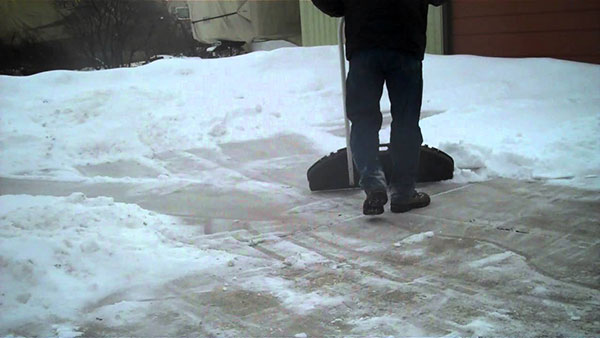
It can take a bit of practice to learn how to use a snow pusher effectively and with as little effort as possible. Once you’ve attained a bit of experience, they become easier to use. Manual snow pushers are usually better suited for light to moderate amounts of snow. They’re not ideal in areas that are blanketed in several feet of snow, particularly if there’s a lot of ice involved in the mix.
Look for features like metal pushing blades, heavy-duty tires, and ergonomic hand grips when making your choice. Also, it’s generally wise to look for snow pushers that are more robust than your needs require. This will ensure it lasts for years to come and gives you the best return on your money.
5. Snow Spear
Despite being called a snow spear, these tools are actually used to break up and clear ice. They typically feature a long metal or wooden handle with a D-shaped hand grip. The business end of the tool bears a wide, flat blade that can be plunged through thin layers of ice with ease. Thick ice can also be broken up with these tools, but you’ll typically find it necessary to chop into it several times to free a block of ice.

Some opt to use a standard shovel rather than a snow spear to clear ice. However, tools designed for the job usually work better. Additionally, a snow spear can be used for a variety of other purposes during the warm months of the year which further increases their value. Some examples are removing roof shingles, digging thin trenches for water or electrical lines, and severing small tree roots.
6. Salt Spreader
Salt lowers the melting temperature of ice, so it can be very effective for melting the snow and ice coating your property. It’s a popular method for many homeowners because it doesn’t take a lot of effort or muscle power to distribute salt.
However, it can be time-consuming and a bit tedious to spread salt by hand. It makes it much easier if you use a mechanical salt spreader. It reduces the amount of effort and also ensures that the salt is spread in a relatively uniform fashion.
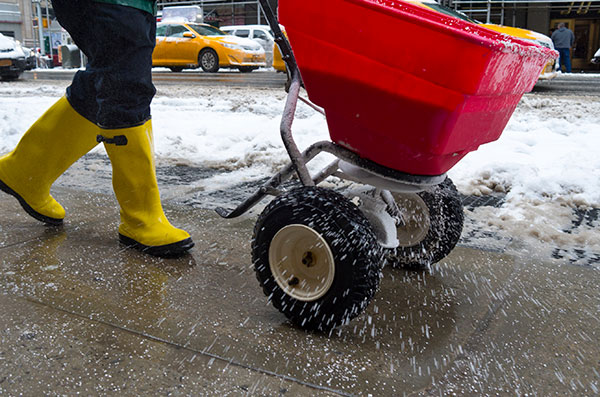
Types of salt spreaders range from those designed to be fitted on the back of a truck to walk-behind models that resemble lawnmowers. The first type is best suited for municipalities and those with vast areas to treat. The walk-behind models are usually ideal for homeowners.
As with most other snow removal tools, make sure to purchase a salt spreader that is appropriate for the amount of snow confronting you each year. It’s also important to consider the amount of space you’ll need to cover while using the spreader. Some features to look for in high-quality salt spreaders are large, all-terrain wheels, flow regulators to alter the amount of salt distributed, and heavy-duty steel or alloy construction.
Snow Removal Safety
No matter how you plan on tackling your snow and ice related problems, you’ll want to make sure to avoid injuries and related illnesses. Thousands of people injure themselves or suffer serious medical problems while trying to clear snow each year. You don’t want to join their ranks.
Most such injuries occur as the result of falls, while others precipitate from the low temperatures, or wet conditions associated with snow clearing. Some injuries are due to the physical demands of snow clearing as it’s very strenuous work. For example, a 40-year-old man of average height and weight can burn 500 calories or more while shoveling snow for only an hour. Often it’s necessary to spend several hours clearing snow. Such high levels of physical exertion can lead to sprains, strains, and even heart attacks.
Accordingly, you’ll want to follow these safety tips while trying to clear your property:
- Dress appropriately for the weather. This means wearing several layers to trap warm air next to your body plus a waterproof outer layer to keep you dry. Be sure to add or shed layers as necessary to remain comfortable. Do your best to avoid sweating as this can ultimately give you a chill.
- Familiarize yourself with some of the signs and symptoms of hypothermia. Some of the most common signs include uncontrollable shivering, blue lips, and a dulled mental state. Always go inside and drink warm fluids at the first sign of hypothermia.
- Avoid slips and spills by wearing appropriate footwear. This typically means rubberized boots with large tread that have the added benefit of keeping your feet dry. Even with proper footwear it can still be easy to slip, so try to keep your knees slightly bent while working or walking on slippery surfaces. This will help you reduce the chances of falling.
- Always let someone know before going out to work and the approximate time you should return. Hopefully you’ll avoid injuries while clearing snow but could become immobile or incapacitated. By letting someone know your plans, you’ll be less likely to freeze while waiting for assistance. It’s wise to carry a cell phone with you while working outside to make it easier to call for help.
- Don’t forget to protect your extremities from cold temperatures. Your fingers, toes, ears, and nose are some of the first places likely to suffer frostbite. It’s always important to protect them from the cold, especially if it’s windy. Wear thick socks, gloves, and a ski mask or scarf.
- Use care when removing ice and snow from above your head. Be careful to stay out of the way of falling snow and ice if you’re scraping off the roof or even simply working under awnings or other snow-covered locations. Both snow and ice can be quite heavy, it’s possible to be buried or injured by it.
- Keep your hands and feet away from sharp blades. Snow blowers and other motorized tools often have blades that help to break up the snow and ice covering the ground, you’ll want to be careful working near them to avoid potentially serious cuts. While the likelihood of injury is lower with handheld tools, it’s important to keep your feet clear while using snow spears and similar tools.
Final Thoughts
What types of tools have you found helpful during heavy snowfalls? We’d love to hear about the tools and techniques that have worked for you. Be sure to tell us all about your experiences in the comments below.
